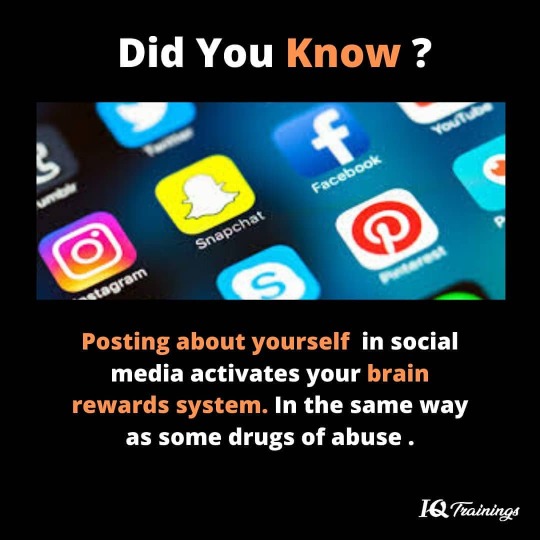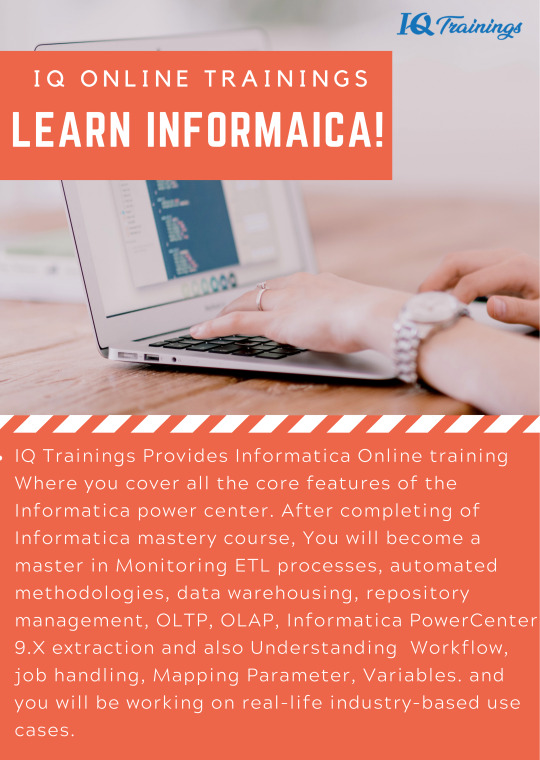Don't wanna be here? Send us removal request.
Photo

#Monday Motivation #mondaymood #mondayinspiration #mondaymorning #mondaymornings #mondayblues #iq #iqonlinetrainings #digitalmarketing #digitalpraful #mondayinspiration https://www.instagram.com/p/B9gG_-zn5WZ/?igshid=1kvyrw7f66esx
#monday#mondaymood#mondayinspiration#mondaymorning#mondaymornings#mondayblues#iq#iqonlinetrainings#digitalmarketing#digitalpraful
0 notes
Photo

Why python....? #pythonprogramming https://www.instagram.com/p/B9B-k_dlDmU/?igshid=118j9c7gfo1vq
0 notes
Photo

#mondaymotivation #motivation #motivated #motivationalquotes #motivationmonday #mondaymorning #mondays #mondayinspiration #motivacion #iq #iqtrainings #iqonlinetrainings #iq (at India) https://www.instagram.com/p/B87_-1knYAB/?igshid=1qlqypza7thk0
#mondaymotivation#motivation#motivated#motivationalquotes#motivationmonday#mondaymorning#mondays#mondayinspiration#motivacion#iq#iqtrainings#iqonlinetrainings
0 notes
Photo

Are you that one having more curiosity to learn .. #iqonlinetrainings #iqtrainings #googlesearch #google #search #curiosity #seo #sem #digitalmarketing #marketingdigital #marketing #branding #searchengineoptimization #serp #resultspage #googleresultspage (at India) https://www.instagram.com/p/B81LVCbFSNG/?igshid=nnzs1gs9dbbs
#iqonlinetrainings#iqtrainings#googlesearch#google#search#curiosity#seo#sem#digitalmarketing#marketingdigital#marketing#branding#searchengineoptimization#serp#resultspage#googleresultspage
0 notes
Text
SAP MM Interview Questions and Answers
1. What do you know about SAP MM?
SAP MM is the functional module of SAP. It looks after the management of the material and obtains handling. To complete the procurement to pay process this module consists mainly of master data, a configuration of system and transactions.
2. What are the benefits or uses of material management?
Material valuation
Multi-location inventory
Bin management
The lot and serial traceability
Product life cycle management
Inventory replenishment
Scheduling and resourcing
3. What are the features of material management?
Purchasing
Production and material control
Non-production stores
Transportation
Material handling
Receiving
Looking to Start Your Career in SAP MM? Here you go Enroll for SAP MM Training
4. List out the essential components of material management.
Determine requirements
Source determination
Vendor Selection
Order Processing
Order follow up
Goods receipts and Inventory management
Invoice Verification
5. What is material requirement planning (MRP)?
It is a module in SAP enterprise resource planning. It is a type of planning tool to help production and procurement planners to create feasible and realistic plans which help to quickly initiate procurement and production process.
6. What is consumption-based planning (CBP)?
CBP is based on past consumption values which make use of the forecast or other statistical procedures to determine future requirements. Consumption-based planning (CBP) always triggers when the stock level plunge below the predefined reorder point or forecast requirements calculated using past consumption values.
7. What is the difference between MRP and CBP?
In material requirement planning, the prediction of material requirement is based on sales and operations planning while in, consumption-based planning the prediction of material requirement is made, based on historical demand for materials.
8. What is the Master production schedule (MSP)?
It is a plan for individual commodities to be produced in each period such as staffing, production, etc. It is mostly linked with manufacturing in which the plan denotes when and how much of each product will be demanded.
9. What is the planned order in material management?
In Material Management, planned order is sent to an industry and is a material requirement planning request for the procurement of a particular material at a determined time. It certainly specifies when the internal material movement needs to be made and the amount of material that is demanded.
10. What is production order and purchase order?
A production order defines which components and sequence of operations are to be used and how the order costs are to be resolved. It also determines which material is to be prepared, at which location, and at what time and how much quantity is required.
Formal requests or guidance from a purchasing firm to a vendor or factory to supply a certain quantity of goods (or) services at a certain point of time is called purchase order.
11. What is the process order?
Process Orders (PP-PI-POR) are the central component used for the accurate planning and execution of process manufacturing. A process order constitutes the production of batches (materials) in a production run or the rendering of services.
12. What is meant by transaction code in material management?
A transaction code (or t–code) consists of letters, numbers, or both, and is entered in the command field at the top of any SAP GUI screen. Every function in SAP ERP has an SAP transaction code that is associated with it. By using t-codes you can directly access any function in SAP.
13. What are contracts in material management?
A contract is a long-term agreement with a vendor to supply a material or provide a service for a certain period of time. These are specified consequently in release orders issued against the contract when the customer requires them.
14. Define purchase requisition?
A Primary document that is used as a part of the accounting method to launch a merchandise or supply purchase is called Purchase Requisition. By processing a purchase order, suitable controls can identify the business requirements for the products, as well as monitor the legitimacy of purchase.
15. How do you release and create purchase requisition in SAP material management?
Purchase requisition creation can be done in T-code ME51N and is a straightforward process:
Execute ME51N transaction.
Purchase requisition document type: NB – standard.
Source determination: ON or OFF.
Header note.
Material: material number.
Quantity and UoM.
Storage location: in which the material is stored.
Vendor: It is automatically determined by using source determination – the field number
Tracking number: As covered in previous topics, the desired value can be entered manually
Valuation price: This should be copied from material master data if it is maintained there if not it has to be entered manually (if this field is not set as optional).
We can save transaction data, after entering the desired information in the fields.
16. What is meant by special stock in material management?
Special Stocks are stocks that belong to a company code. These are not placed in any storage location & no physical inventory is performed.
17. Mention the different types of stocks.
a) Valuated Stock
Unrestricted Stock
Quality Inspection Stock
Blocked Stock
b) Non-Valuated Stock
c) Special Stock
Subcontracting
Consignment
Stock Transport Order
Third-Party Processing
Returnable Transport Packaging
Pipeline Handling
18. What is meant by master data?
Basically, Master Data is created centrally and is valid for almost all the applications. It remains constant over time but it is required to update it on a regular basis. For example, the Vendor is like a type of master data and he is used for creating purchase orders.
19. What is master data management?
A comprehensive method of enabling an enterprise to link all of its critical data to a common point of reference is called Master data Management. MDM also improves data quality, while streamlining data sharing across personnel and departments. In addition, it also can facilitate computing in multiple system architectures, platforms, and applications.
20. What is inventory management?
Inventory management is based on several key processes like Definition of movement types, reservations, goods issue, and goods receipt. Inventory management is used to manage a good inventory.
21. What are quotations in SAP material management?
Quotations in SAP MM are certain requests for vendors which give us information about their terms and conditions, best prices, schedules of deliveries and other information.
22. What is invoice processing?
The process in which a company’s account payable is used to manage supplier invoices is called Invoice Processing. It begins when you accept an invoice and ends when payment has been made and reported in the general ledger.
23. How is the quota rating checked?
The formula for checking the quota rating is an addition of the base quantity of the quota and the allocated quantity quota and divides it by the overall quota.
24. Mention the last stage in the cycle of procurement?
The last stage of the procurement cycle is the verification of the invoice. This also updates the documents which are related to the accounts and finances. There is a difference between the real invoice and the blocked one the real invoice can be handled by verification of the invoice.
25. What are the different types of ERPs?
Different types of ERPs are as follows: SAP, Microsoft Dynamics, PeopleSoft, Oracles, Siebel, BAAN. These are some of the different types of Enterprise Resource Planning.
For More Info. visit our website: https://www.iqonlinetraining.com call:+917672046498(IND) +19043042519(USA)
0 notes
Photo

Did you know....??? . . . #socialmedia #socal #sem #smm #facebook #instagood #instagram #didyouknowfacts #iqtrainings #iqtrainings #iq #iquitosperu #learning #education (at India) https://www.instagram.com/p/B8yiaNjF1nI/?igshid=cj3qcajby1f
#socialmedia#socal#sem#smm#facebook#instagood#instagram#didyouknowfacts#iqtrainings#iq#iquitosperu#learning#education
0 notes
Video
youtube
Informatica Certification Training | IQ Training
IQ Trainings Provides Informatica Online training Where you cover all the core features of the Informatica power center. After completing of Informatica mastery course, You will become a master in Monitoring ETL processes, automated methodologies, data warehousing, repository management, OLTP, OLAP, Informatica PowerCenter 9.X extraction and also Understanding Workflow, job handling, Mapping Parameter, Variables. and you will be working on real-life industry-based use cases.
#informatica#Informaticaonlinetrainings#Informatica study#informatica certification#Informatica learning
0 notes
Text
Informatica Certification Training | IQ Training

IQ Trainings Provides Informatica Online training Where you cover all the core features of the Informatica power center. After completing of Informatica mastery course, You will become a master in Monitoring ETL processes, automated methodologies, data warehousing, repository management, OLTP, OLAP, Informatica PowerCenter 9.X extraction and also Understanding Workflow, job handling, Mapping Parameter, Variables. and you will be working on real-life industry-based use cases.
What you'll learn in Informatica Training Course?
Covers core understanding about PowerCenter and how to go about using it
Focuses on different Informatica products
Present basic and advanced functionalities of Power center
Emphasizes using PowerCenter components to build Mapping, Workflow, and Tasks
Covers important topics such as Informatica Designer, Console, and Manager
Dynamic curriculum with the inclusion of the latest developments in the field
Ideal for all aspirants including software developers, analytics professionals, and enterprise architects
Designed from a practical and industry perspective
CORE BENEFITS OF LEARNING INFORMATICA
Informatica is a leading and popular data integration platform that is preferred due to the many advantages it offers. It has the capability to interoperate with a wide range o disparate systems and applications and is therefore adopted by many organizations across the globe. It is, therefore, a good choice to learn and expand your career in.
COURSE CONTENTS
Informatica online tutorial classes at IQ Trainings is aimed to help developers use, create, develop and monitor Informatica and understand how it is used in data mining operations. This Training also includes the Installation & Configuration of Informatica Power Center.
For More Info. visit our website: https://www.iqonlinetraining.com
call:+917672046498(IND) +19043042519(USA)
#informatica#Informaticaonlinetrainings#informatica certification#Informatica study#Informatica learning
0 notes
Photo

JAVA was just an accident!! . . . . #java #javajokes #javaprogramming #javamemes #javamemesofficial #javamemesofficial #javascript #javalemcgee #javabike #javacomedy #onlinelearning #onlinetraining #onlinecourses #iqtrainings #iqonlinetrainings #iq #iquitos (at India) https://www.instagram.com/p/B8sncrEHg_0/?igshid=1f0583aj3pxt3
#java#javajokes#javaprogramming#javamemes#javamemesofficial#javascript#javalemcgee#javabike#javacomedy#onlinelearning#onlinetraining#onlinecourses#iqtrainings#iqonlinetrainings#iq#iquitos
1 note
·
View note
Text
What is BlockChain Technology? | Architecture & Major Aspects | Block Chain 2.0
What is Block chain Technology?
Block chain technology is a decentralized computation and information sharing platform that enables multiple authorities’ domains who don't trust each other to coordinate, collaborate and cooperate in a rational decision-making process.
What is the Block chain used for?
In initial stages, Block chain is mainly used for Bitcoin and other crypto currencies now its applications are widely spreader to several industries including Health, Real Estate, and Finance, etc
Formal Definition of a Blockchain?
Block chain is a decentralized, permission less open distributed ledger that can record all the transactions between two clients efficiently in a permanent way.
Block chain major aspects are:-
1. Accessible to all
2. No single party to control
3. Fast and scalable
4. Maintains persistent information
5. Verifiable.
What are the 3 pillars of Block chain Technology?
1. Decentralization
2. Immutability
3. Transparency
Centralized Vs Decentralized VS Distributed?
Centralized:
Complete dependence on a single point is not safe.
Decentralized:-
It refers to multiple points of coordination.
Distributed:-
All nodes are interlinked with each other nodes
Does BlockChain work like a Public Ledger?
A Block chain is a form of public ledger which is a series of blocks that can record transactional details after suitable authentication and verification by the network participants.
We need to ensure a different number of aspects
1. Protocols for commitment:-
Every valid transaction that is committed from the client must be recorded and included in the block chain within a finite time.
2. Consensus:-
Ensure that all local copies must be maintained consistent and well updated.
3. Security:-
The data needs to be tamper proof.
4. Privacy and Authenticity:-
The privacy and authenticity of the data must be ensured that belong to the various clients.
What Is Bitcoin?
Bitcoin is a completely decentralized, peer to peer, a permission less, Crypto currency platform that came into existence in 2009.
1. Completely decentralized:-
No central party required for ordering or recording anything.
2. peer to peer:-
Software that runs on machines of all stakeholders to form the system
3. Permission less:-
No identity, no need to sign up anywhere to use
BlockChain 2.0?
As Block chain captured the interests of users, mainstream companies are trying to use the central block chain idea and build alternative systems around it for use in industry, manufacturing, supply chain, finance, and IOT, etc. The movement this started termed Block Chain 2.0.
How does Block Chain work for Bitcoin?
Transaction:-
Tina uses a bit coin to buy flowers at Royse’s flowers shop using her private key to transfer ownership of the currency,
Mining Network:-
The transaction is sent through the bitcoin network to the miners with powerful computers.
Block:-
Here, miners use trial-and-error computations to solve a puzzle created by combining data based on recent transactions.
Verification:-
The first one who finds the unique number that unlocks the puzzle earns the right to bundle the transactions after verifying he gets rewarded with a newly minted bitcoin. But only after other miners confirm that the blocks transactions don’t contain any attempts to spend the same funds twice.
Block chain acts as a public ledger showing all transactions. Each block has a cryptographic link to the previous one.
This brings us to the end of this article on BlockChain Technology. We have also come up with a curriculum that covers exactly you to become a certified Blockchain Architect! You can have a look at the course details for BlockChain Architecture here
0 notes
Photo

Tableau is an authoritative., safe and flexible end-to-end analytics platform for your data Which Elevates people with the power of data. and assists in simplifying raw data into a very easily understandable format. Tableau Software is one of the fastest-expanding data visualization tools which is currently being used in the Business intelligence industry.
0 notes
Text
Tableau Certification Training With live projects | IQ trainings
What is Tableau
Tableau is authoritative. Safe and flexible end-to-end analytics platform for your data Which Elevates people with the power of data and assists in simplifying raw data into a very easily understandable format.
Tableau Software is one of the fastest-expanding data visualization tools which is currently being used in the BI industry. You can make a very rapid
scanning of data using Tableau and the visualizations created are displayed in the form worksheets and dashboards.
We at IQ trainings offer a great quality of online training programs and professional courses that you can always find as desired.
In this Tableau certification, we will let you get expertise in Tableau desktop and server. You will work on real-time projects in Tableau desktop, server Tools, dashboard, web interface, publishing, connectivity, publishing, blending, data aggregation, and blending. After Completion of Tableau Training, you will be able to Understand Tableau’s basic concepts, a combination of data, Data Blending Real-time analysis, academic researchers, visual data analysis, etc.
0 notes
Text
OpenStack Top Interview Questions And Answer For 2020
1) Explain what is OpenStack?
OpenStack is a set of software tools for managing and building cloud computing platforms and also used for handling a large group of virtual machines with the help of the graphical user interface. The working of OpenStack is similar to Linux and It is a free and open-source software cloud computing platform.
2. What are the advantages of using OpenStack?
The following are the advantages of using Openstack:
OpenStack provides a strong foundation in delivering the self-storage It is very easy to handle low-cost storage by using OpenStack Using OpenStack, licensing fees can be managed because virtual machines are used in OpenStack.
3. How many types of storages are provided by the Openstack?
Openstack provides two types of storages:
Ephemeral storage
Persistent storage
4) Name the three important modular architecture of OpenStack?
The following are the three modular architecture components for OpenStack
OpenStack Compute: This is used for managing large networks on virtual machines.
OpenStack Object Storage: It acts as a storage system and provides support for object storage devices and block storage devices.
Image Service: It is used as a delivery service and provides delivery for discovering and registering images of virtual machines.
5) What is the command used for managing floating IP addresses in Openstack?
nova floating-IP-*
6) Give an overview of OpenStack Services?
OpenStack offers services like
Keystone: It is used for providing an identity list and is used for authentication of users.
Glance: It provides the image information of the hard disks and also Manages images in different formats
Cinder: Provides persistent block storage
Neutron: It is used for building connectivity between components as it enables users to create and attach interfaces to networks.
Nova: Provides instances on user’s demand
Swift: Storage platform integrated directly into applications
Ceilometer: Openstack for billing
Heat: Allows automated infrastructure deployment
7) What does “User”, “role” and “tenant” indicate in OpenStack?
User: Users are members of multiple projects in OpenStack
Tenant: Tenant is referred to as a group of users in OpenStack. It is also known as a project or accounts. Role: It is defined as the position which is used for authorizing or mapping the user.
8) What is a hypervisor?
The hypervisor is a piece of computer software that provides virtual machine access to the underlying hardware. The hypervisor creates, manages and monitors virtual machines and the system on which one or more virtual machines are defined is referred to as the host machine.
9) What are the types of hypervisor does OpenStack supports?
KVM
VMware
Containers
Xen and HyperV
10) What are the two types of storage does OpenStack Compute provides?
OpenStack provides two types of block storage,
Ephemeral Storage: The size is defined based on the instance as Ephemeral storage is associated with a single unique instance. In the same way, the instance associated with is terminated, then data on ES ceases to exist.
Persistent Storage: This storage is also called as Volume Storage. Unlike ES, this storage is not dependent on any instance and is persistent.
11) What are the three types of persistent storage?
The Three types of Persistent Storage are:
Object storage
Block storage
File-based storage
12) Explain the basic functions of Identity Service in OpenStack?
The basic functions of Identity Service are User Management: It tracks the users along with their permissions Service Catalog: It provides a catalog of available services along with their API endpoints
13) What are the main components of identity user management?
Users: It represents a person, service or system who uses the services of OpenStack Cloud.
Tenants: Depending on the service operator a tenant is used for authorizing and authenticating a customer, account, organization or project.
Roles: A role includes a certain set of rights and privileges and it determines the operations in which a user can perform in a given tenant.
14) Name the networking options used in OpenStack?
The following are the networking options used in OpenStack
1.Flat Network Manager 2.Flat DHCP Network Manager 3.VLAN Network Manager
15) What is the meaning of the term “Cinder” in OpenStack service? OpenStack provides a service called cinder for handling persistent storage for virtual machines. There are multiple backends for cinder and the default backend which is utilized is LVM, also called Cinder-Volumes.
16) List out the storage locations for VM images in OpenStack?
OpenStack Object Storage
Filesystem
S3
HTTP
RBD or Rados Block Device
GridFS
17) Explain what is Cells in OpenStack?
Cells are the groups that are separated from the hosts of the OpenStack compute cloud. Cells later configured as trees. 18) What is the hardware used for networking in OpenStack?
The following are the hardware used for networking in OpenStack
Networks
Routers
Subnets
Ports
Vendor Plugins
19) How can you transfer volume from one owner to another in OpenStack?
We can transfer a volume from one owner to another by using the command cinder transfer*.
20) What is the bare-metal node?
A bare-metal node is used for a single-tenant cloud and gives access to bare metal drivers, which is used for handling physical hardware resources on the same network.
21) What does bare-metal comprise of?
The bare metal node comprises of two separate components
Bare metal node Orchestrator: It is management software, which is used as a dispatcher to all nodes in the cluster. Bare metal node Operating System: It is a base software, which runs on each separate node in the cluster.
22) What is the command used to remove the network interface from the bare-metal node?
Command used to remove network interface from the bare-metal node is bare-metal – interface remove.
23) What is the function of the Cinder Scheduler?
Cinder Scheduler is also known as routing volume which is used to create requests for appropriate volume service.
24) What is meant Token in OpenStack?
The token is an alpha-numeric string that is similar to passed-based validation which is used for the authentication of keystone. With the generated token users can access a certain set of services depending upon the access level of the user. The token comes with a limited period of time. Once the given time period exceeds, it has to be renewed again.
25) Explain about OpenStack Python SDK?
SDK( Software Development Kit) is used for writing python scripts and provides a platform for OpenStack where all the services can be managed in one place. The languages in SDK bind access to the OpenStack clouds, and complete API reference with easy interaction with REST API
26) What are the commands used for pausing and unpausing an instance?
Command used to pause an Instance: $ nova pause INSTANCE_NAME Command used to unpause an instance: $ nova unpause INSTANCE_NAME
27) What is the command used for listing IP address information?
$ nova floating-IP-pool-list 28) What is meant by the term “flavor” in OpenStack?
The term flavor in OpenStack refers to an available hardware configuration for a server, which defines the size of a virtual server that is to be launched.
0 notes
Text
Openstack Certification course
Openstack online training
IQ training Openstack Certification course makes you an expert in Swift, Nova, Glance, Keystone, Neutron, Cinder, Trove, Heat, etc. This training is given by industry experts which helps you to clear Certified OpenStack Administrator Exam.
OpenStack is an array of software tools for creating and managing cloud computing Foundation for private and public clouds. OpenStack is considered as the future of cloud computing, it is open-source software that is backed by many organizations worldwide. Open Stack allows customers to arrange virtual machines and other requests to manage various responsibilities for handling a cloud environment.
you will also understand
Overview of Keystone identity service: Guide to Install, Configure and Usage Details Overview of Glance image service: Guide to Install, Configure and Usage Details Operations on compute mode: Add & Remove Additional NodesOverview of Heat orchestration service: Guide to Install &Launch from Pre-Configures Templates. Virtualization, Cloud & OpenStack Introduction Module Keystone & Glance OpenStack Compute and Block Storage Service Neutron (OpenStack Network Service) Swift (OpenStack Object Storage Service) Horizon (OpenStack Dashboard service) And many more.
Core Benefits of learning
OpenStack is a set of software tools used to build and manage cloud computing platforms for public and private clouds. It allows users to deploy virtual machines and other instances that can handle different jobs for managing a cloud environment it allows thousands of developers across the globe to work in parallel and create the most robust, secure and reliable products, making this tool very popular.
For More Info. visit our website: https://www.iqonlinetraining.com call:+917672046498 +1732-593-8450(USA)
0 notes

